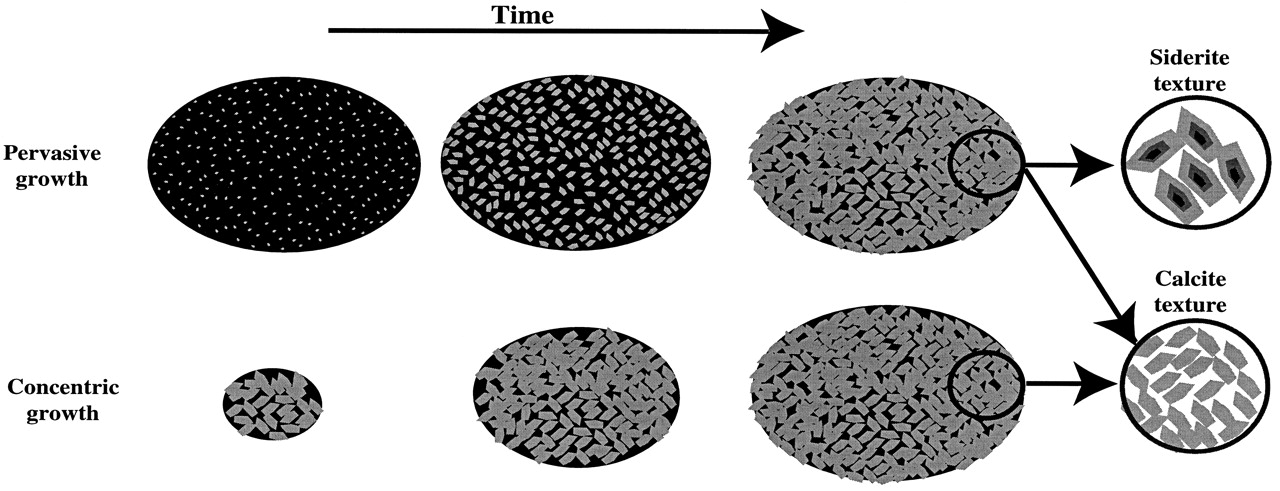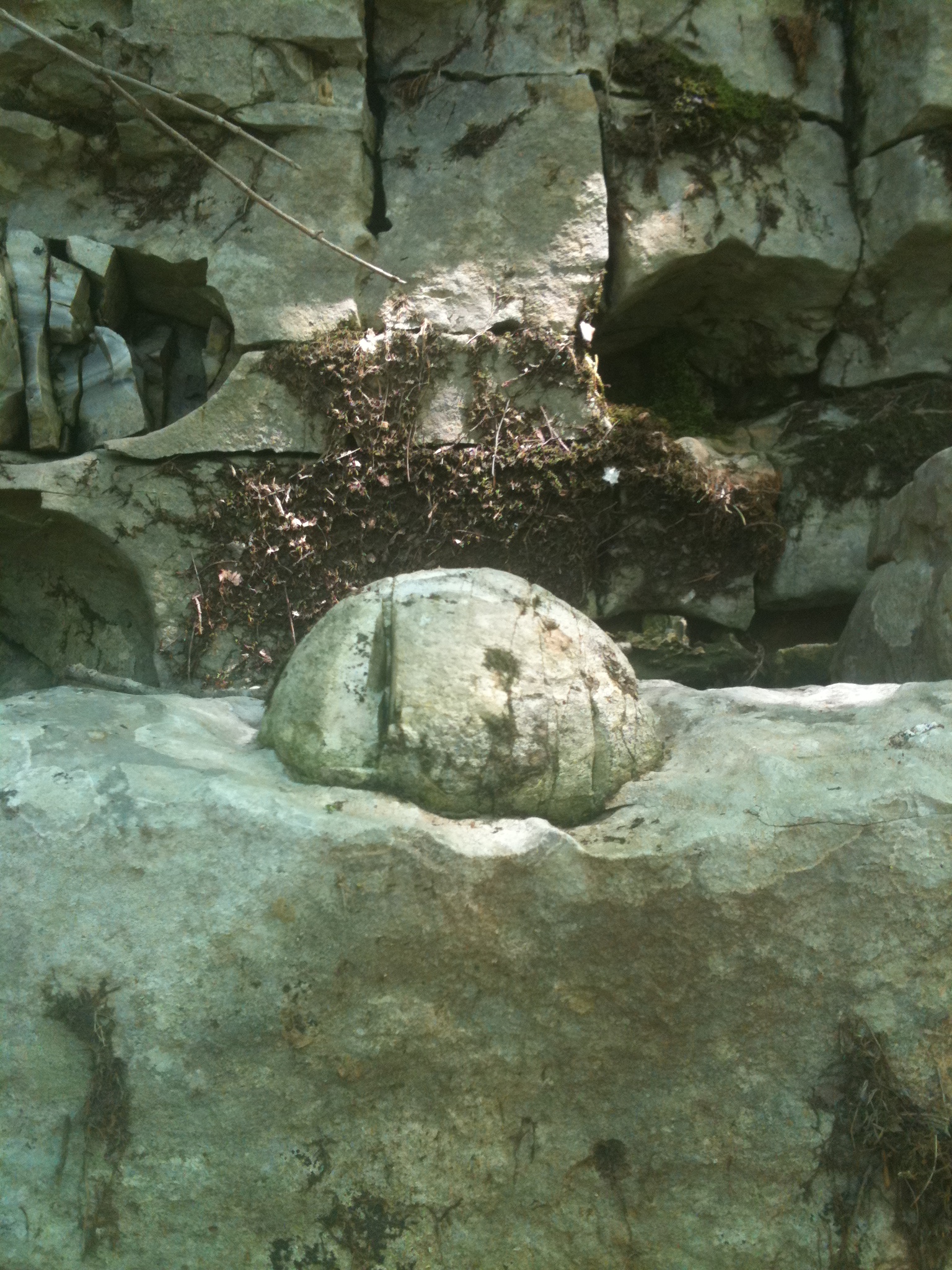This is no mere cache, it is an EarthCache; an educational form of a virtual cache. The reward for these caches is learning more about the planet on which we live - its landscapes, its geology or the minerals and fossils that are found there. They are developed in association with the Geological Society of America
The Earthcache is located just outside of Billy Dunlop Park in Clarksville, TN and can be completed at any time, but it’s recommended to be visited in daylight due to the terrain. If approached from the Park it must be when the park is open, if approached from the trailhead be aware of the sheer drop and loose rocks.
Concretions
A concretion is a compact mass of mineral matter, which is usually spherical, or flat/disk-shaped, embedded in a larger host rock made from a different mineral composition. This round mass of sedimentary rock cement is carried into place by groundwater hydrology. Concretions, the most varied-shaped rocks of the sedimentary world, occur when a considerable amount of cementing material precipitates locally around a nucleus, often organic, such as a leaf, tooth, piece of shell, or other fossilized items. Concretions vary in size, shape, hardness, and color, some requiring the use of a magnifying lens to be clearly visible to large boulder sized rocks spanning several feet in diameter and weighing a few hundred pounds. They are commonly composed of a carbonate mineral such as calcite, but sometimes an iron oxide or hydroxide such as goethite or sometimes an amorphous or microcrystalline form of silica about a nucleus. But they can also be composed of other sedimentary minerals that include dolomite, anchorite, siderite, pyrite, barite and gypsum, to name a few.
The word "concretion" is derived from the Latin "con", meaning "with, together, or joint", and "cresco" -- meaning "to grow, increase, or expand." These "expanded" rocks have a many origins that require geologists to integrate information from a variety of disciplines, including biology, chemistry, soil science, meteorology and geology itself.
There are two main types of concretions:
a) concentric: The concentric type grow in layers from the inside out (onion layering), often forming spectacular patterns.
b) pervasive: Created when precipitating minerals infill host sediment's pore space cementing them together, usually at once.

A prize for collectors of concretions are the hollow type called geodes. These globular types vary from centimeters to about 30 centimeters and usually have a rough surface of dense chalcedony. They are typical of some limestone beds which are prevalent in TN, but seldom in shales. This wall should be left as pristine as you found it, please don't collect or damage any of the rocks you see. This should be left intact for others to enjoy as well; you are welcome to perform CITO of course.
You must send me the answers to the following questions in order to log this cache:
1. Why do you think concretions are prevalent in this particular area?
2. What type of concretions are more plentiful here, (Hint: look at the some of the broken ones)?
3. What is the approximate size of the concretion on the vertical ledge?

Logs without corresponding emails will be deleted.

This Cacher is a United States Army Veteran and also a Proud Member of the MAGC:
